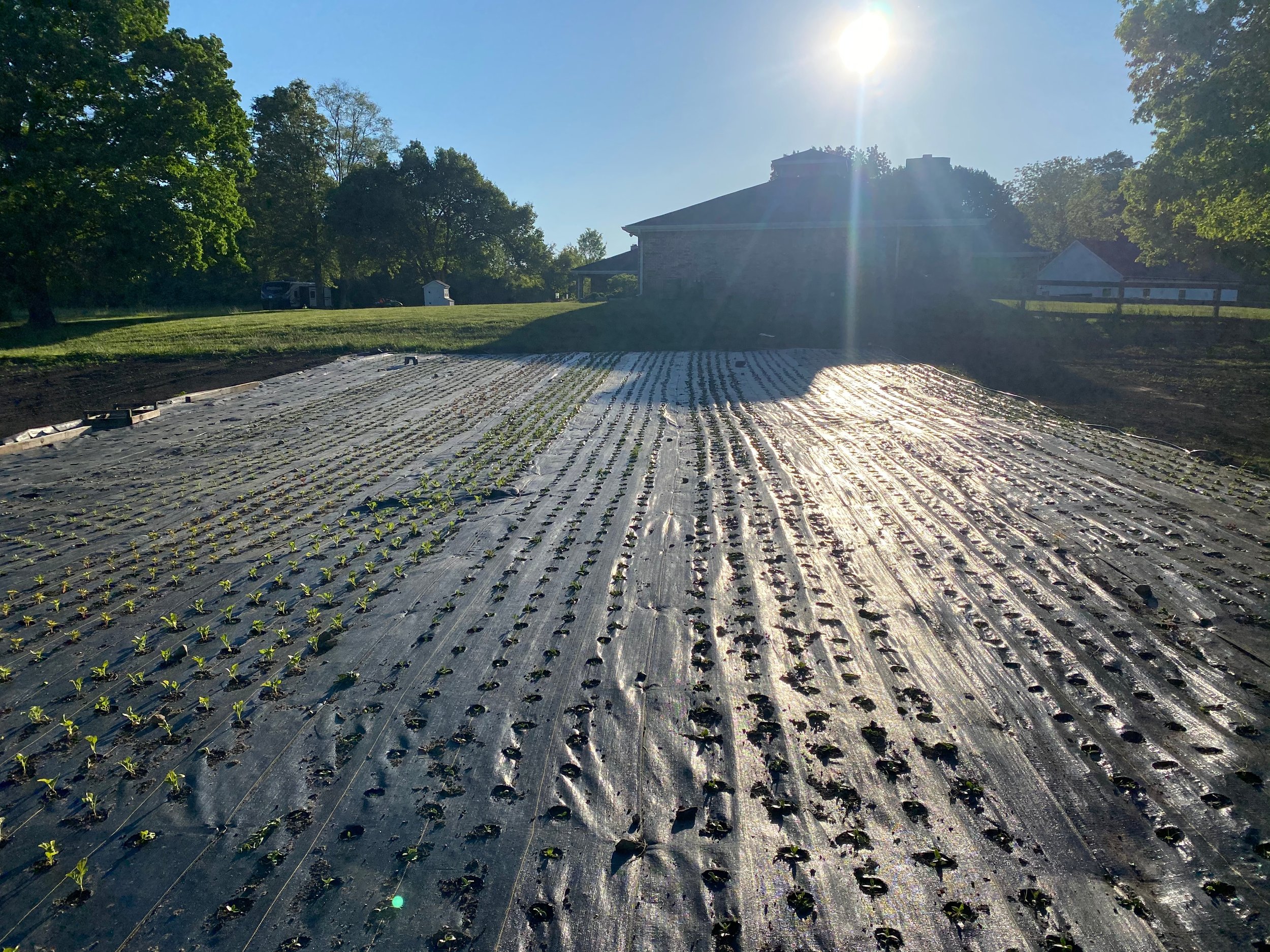How Many Flowers Should I Grow on My Flower Farm?
So, you've decided to start a flower farm—that’s exciting! As you start taking the first steps towards making your love for flowers as a full-time business, it won’t take you long to run into this million dollar question: How many flowers should I grow on my flower farm?
Like most big questions like this, I’m sorry to say that there isn’t a cut and dry answer. The number of flowers that’s right for you depends on a variety of factors—and some of those factors are out of your control.
But while there is no magic formula to tell you exactly how many flowers you should grow, I want to help give you the information you need to help make the best decision for you.
Factors to Consider When Deciding How Many Flowers to Grow
Here are some of the factors you'll need to consider when deciding how many flowers to grow:
Climate and Weather
Some flowers are more suited to certain climates than others. For example, sunflowers and zinnias are heat-loving flowers that do well in warm climates, while tulips and daffodils are cold-hardy flowers that can tolerate frost. While most locations can grow both types, certain flowers are going to do better than others depending on where you grow.
Also, mother nature does what she wants. A storm could roll through and high winds could knock town your taller plants. A bug infestation could wipe out all of your zinnias. Disease could take over certain susceptible plants. You just never know.
Because of this, ensure you have a variety of plant types, but not more than you can handle (more on both of these things later).
Flower Types
There are a few things to consider when it comes to the different varieties of flowers and how many you choose to grow:
Some flowers are more productive than others. For example, zinnias and sunflowers produce a lot of blooms, while roses and lilies produce fewer blooms per plant. When you’re starting out, I recommend you focus your time and energy on cut-and come-again flowers.
Not all flowers carry the same value either. Globe amaranth isn't the same as a zinnia. While zinnias can be a focal flower in a bouquet, globe amaranth is just a smaller, supporting filler. While you want to ensure a variety, you also want to make sure you have enough focal flowers.
Different flower varieties can be spaced differently when you plant them, meaning the number of plants you can fit in a fixed space varies. While this doesn’t make a huge difference when choosing varieties, understanding plant spacing will help you determine how many seeds/plugs/etc. you’ll need to fill the space you have planned for a specific variety.
Target Market
If you plan to sell your flowers to local florists, you’ll likely need to grow a wider variety of flowers, and a more specific color palette than if you are selling them directly to consumers. If you’re doing a subscription or roadside stand, the variety and colors won’t matter as much. I’ll definitely say that you’ll have more flexibility if you sell directly to consumers.
Your Budget
Growing flowers can be expensive, so it is important to factor in the cost of seeds, plants, fertilizer, water, and labor when deciding how many flowers to grow. While most growers fear not having enough flowers (news alert: you can still do great when you don’t have a ton of flowers all season), it also would be a shame to spend startup money and energy on flowers you don’t have time, energy, or sales to get rid of.
Your Experience Level
Full honestly here—in the beginning you’re probably not going to be great at growing cut flowers. When I started, I planted sweet peas in June and wondered why they never took off. They never took off because I planted them at the completely wrong time.
How Many Flowers Should You Grow? Here’s My Recommendation.
All of those factors are certainly important to consider when deciding how many flowers to grow. But ultimately, I recommend growing the number of flowers YOU CAN HANDLE and YOU CAN SELL.
How Big Should Your Flower Field or Growing Space Be?
Most new growers are understandably so excited and want to grow all the flower types and have a massive growing space. But trust me when I tell you that you’ll stretch yourself too thin if you do this—even if you’re not a new grower!
It doesn't matter if you grow a field that is 80' by 100' if you can't sell them or if you can't keep up with the production. My first field was 60' by 80', and I was overwhelmed with the amount of flowers. I never even used half of them because they turned out to be types that weren’t right for me. Coral Fountain amaranth, for example, was way too large and unruly to use in mixed bouquets.
The Importance of Starting Small
If I were to do my first season all over again, I would cut my growing space in half and grow and see what I could handle and sell. If I could sell all the flowers from that field—and document how many bouquets I could make—then I’d decide if it was worth going bigger the next season. If you can't sell them all, don't grow more! Save the time and energy of growing more flowers in more space and focus on selling what you have.
Plus, even as a successful flower farmer, you can have a thriving flower business with just a few flower types.
After years of flower farming and offering a variety of flower types, I have a bustling flower business selling less than five varieties of flowers.
Don't Be Afraid to Experiment
Like I mentioned, there is no one right way to grow flowers. And there’s not a black and white answer to how many flowers you should grow. In the end, my advice is to start small. But beyond that, the best way to find out what works for you is to experiment. Try different types of flowers, different planting methods, and different marketing strategies. The more you experiment, the better you will understand what it takes to be successful in your flower business.






